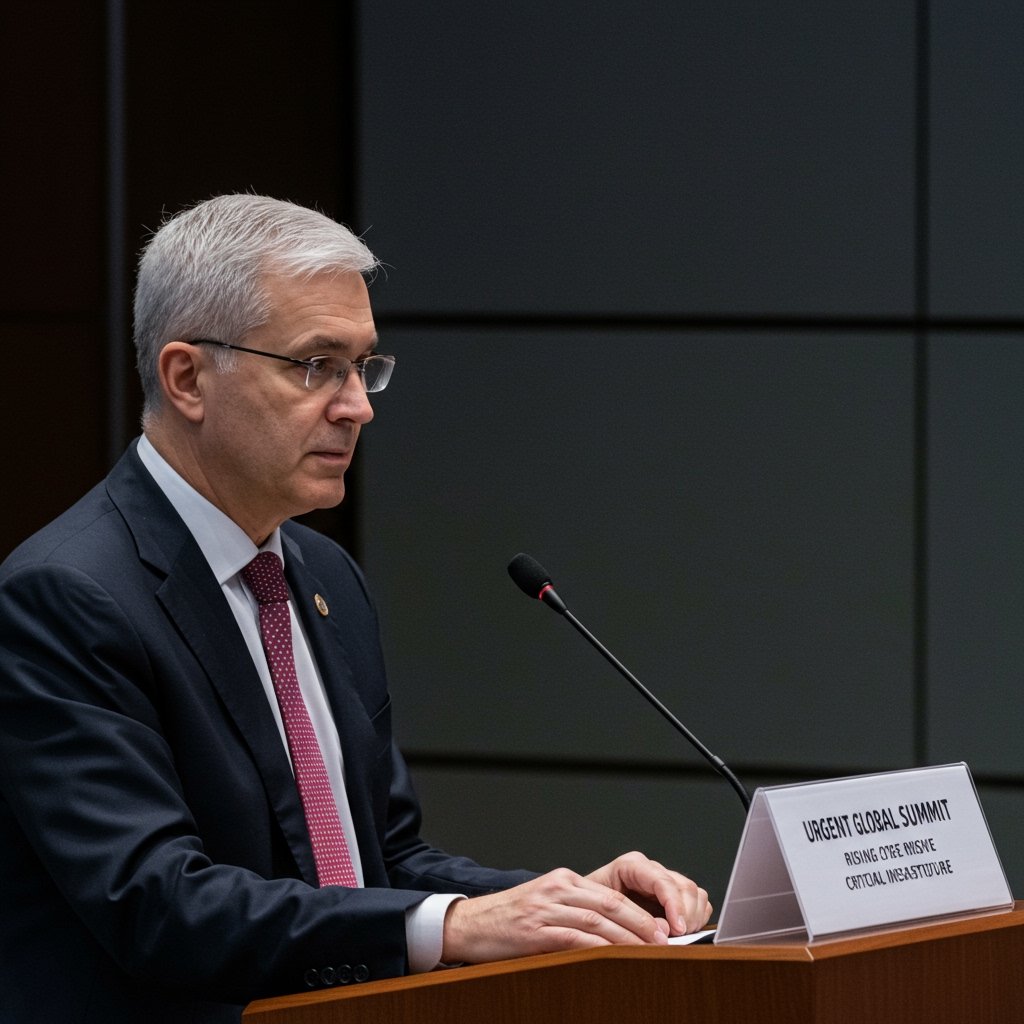Global Leaders Convene Amid Rising Cyber Threat Landscape
Geneva, Switzerland — World leaders, top policymakers, and leading cybersecurity experts converged in Geneva, Switzerland, on February 10, 2025, for a critical global summit aimed at confronting the escalating threat of cyberattacks against essential infrastructure. Organized by the United Nations Cyber Security Agency (UNCSA), the high-level meeting underscored the urgent need for concerted international action in the face of increasingly sophisticated and disruptive cyber aggression, particularly state-sponsored campaigns.
The focus of this pivotal gathering was unambiguous: developing robust, internationally recognized protocols and effective rapid-response mechanisms designed to safeguard critical infrastructure sectors worldwide. These sectors, including energy grids, financial systems, and communication networks, form the backbone of modern society and economies, making them prime targets for actors seeking to cause widespread disruption, economic damage, or espionage.
The summit convened against a backdrop of heightened global concern, fueled by a recent wave of cyber incidents that significantly impacted utilities across North America and Europe in late 2024 and early 2025. These events served as a stark reminder of the vulnerability of interconnected systems and the potential for cyberattacks to have tangible, real-world consequences, affecting millions of citizens and challenging national security.
The Growing Sophistication of State-Sponsored Attacks
The nature of the threat has evolved dramatically. While cybercrime and financially motivated attacks remain prevalent, the past few years have witnessed a marked increase in the sophistication, scale, and disruptive potential of state-sponsored cyber operations. These attacks often leverage advanced persistent threats (APTs), zero-day vulnerabilities, and complex multi-stage tactics to penetrate deeply into networks, remain undetected for extended periods, and position themselves to cause maximum impact.
Participants at the UNCSA summit heard presentations detailing how these state-sponsored actors are often well-funded, highly skilled, and operate with strategic intent, ranging from intelligence gathering and intellectual property theft to positioning for potential future conflict scenarios by mapping or disrupting critical infrastructure controls. The attacks observed in late 2024 and early 2025 highlighted a concerning trend towards direct operational technology (OT) targeting, aiming to manipulate or disable physical systems rather than merely exfiltrating data.
Experts emphasized that attributing such attacks definitively is a complex and often protracted process, further complicating traditional diplomatic or retaliatory responses. This challenge underscores the necessity for proactive defense strategies, resilient infrastructure design, and, crucially, enhanced international cooperation to share threat intelligence and develop common defensive postures.
Key Proposals for a Unified Global Response
The core of the summit’s discussions revolved around concrete proposals for enhancing collective cybersecurity. Two key initiatives dominated the agenda:
Firstly, the establishment of a rapid-response international task force was extensively debated. The concept envisions a standing multinational body composed of cybersecurity experts, law enforcement liaisons, and technical specialists from member states. This task force would be designed to provide immediate assistance to nations experiencing significant cyberattacks on their critical infrastructure, offering technical support, forensic analysis capabilities, and coordination in tracing attack origins and mitigating impact. Proponents argued that such a force could significantly reduce the time lag between detection and effective response, limiting damage and potentially deterring future attacks through the demonstration of global solidarity and capability.
Secondly, proposals for mandatory information-sharing agreements among member states were presented. Recognizing that threat intelligence is a critical asset in cybersecurity, these agreements would compel nations to share indicators of compromise, attack methodologies, and vulnerability information in a timely and standardized manner. The goal is to create a more complete global picture of the threat landscape, enabling countries to pre-emptively strengthen their defenses against threats observed elsewhere. While acknowledging national security sensitivities surrounding intelligence sharing, the consensus leaned towards finding mechanisms, potentially anonymized or aggregated, that prioritize the collective defense of critical infrastructure without compromising essential national interests.
Addressing Challenges and Building Consensus
The path towards implementing these proposals is not without its challenges. Discussions at the summit acknowledged the significant hurdles, including variations in national cybersecurity capabilities, differing legal and regulatory frameworks, and the inherent difficulty of establishing trust and transparency in an environment marked by geopolitical competition.
Issues such as defining the scope of mandatory information sharing, establishing clear triggers for activating a rapid-response task force, and ensuring equitable contributions and access for all member states were subjects of intense negotiation. Representatives from developing nations stressed the need for capacity building support to ensure they could both contribute to and benefit from any new international frameworks.
Furthermore, the debate around attribution remained prominent. While technical attribution is challenging, political attribution carries significant implications. Developing international norms or processes for attributing state-sponsored attacks in a credible and verifiable manner is seen as crucial for enabling proportionate responses and upholding international law in cyberspace.
Expert Perspectives and The Path Forward
Cybersecurity experts present at the summit highlighted the critical interdependence of global systems and the fact that an attack on one nation’s infrastructure can have ripple effects far beyond its borders. They stressed that relying solely on national defenses is insufficient in the face of globally operating threat actors.
The UNCSA emphasized its role in facilitating ongoing dialogue and coordination, aiming to translate the summit’s discussions into actionable frameworks. While no single summit can instantly resolve the complex challenges of global cybersecurity, the February 10, 2025 meeting in Geneva is being hailed as a crucial step towards building a more unified and resilient international posture against cyber threats to critical infrastructure.
The commitment from participating nations signals a recognition that collective security in the digital realm requires unprecedented levels of cooperation. The proposals for a rapid-response task force and mandatory information sharing, while requiring further detailed negotiation and ratification, represent concrete pathways towards achieving this. The real test, however, will lie in the effective implementation and sustained commitment required to turn these concepts into a robust shield safeguarding the world’s essential services from the ever-evolving cyber threat landscape.






